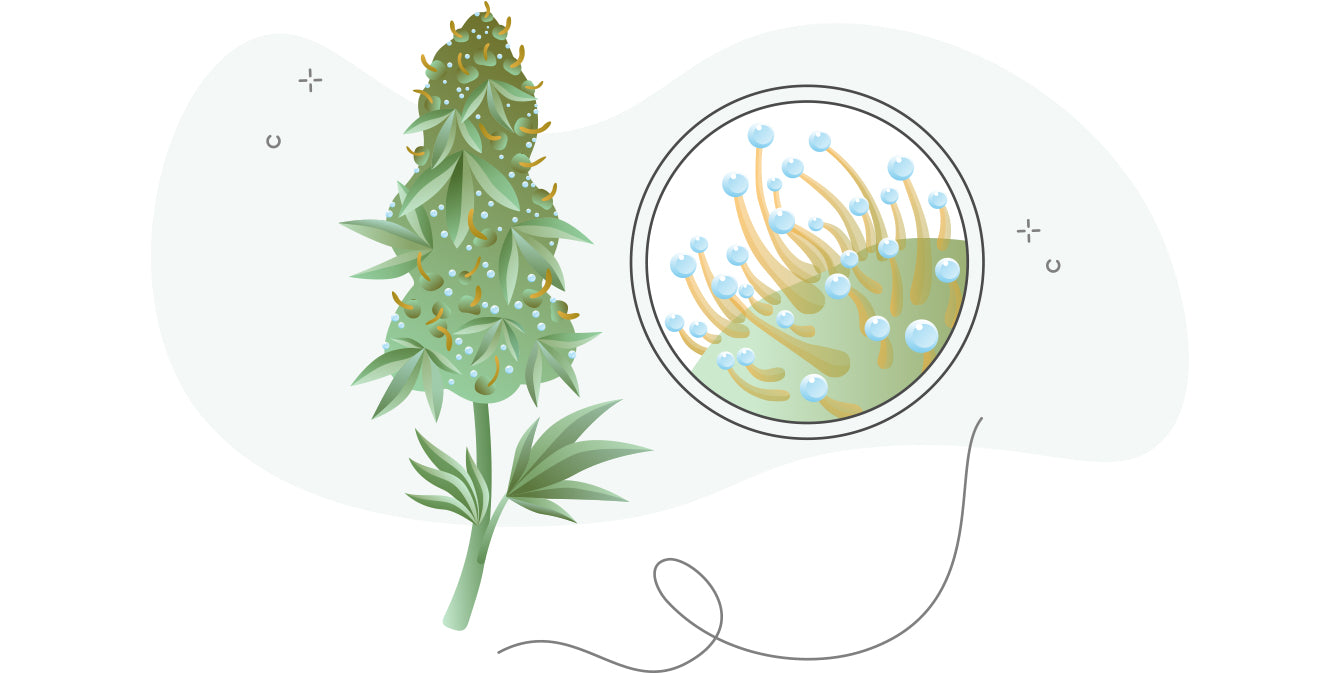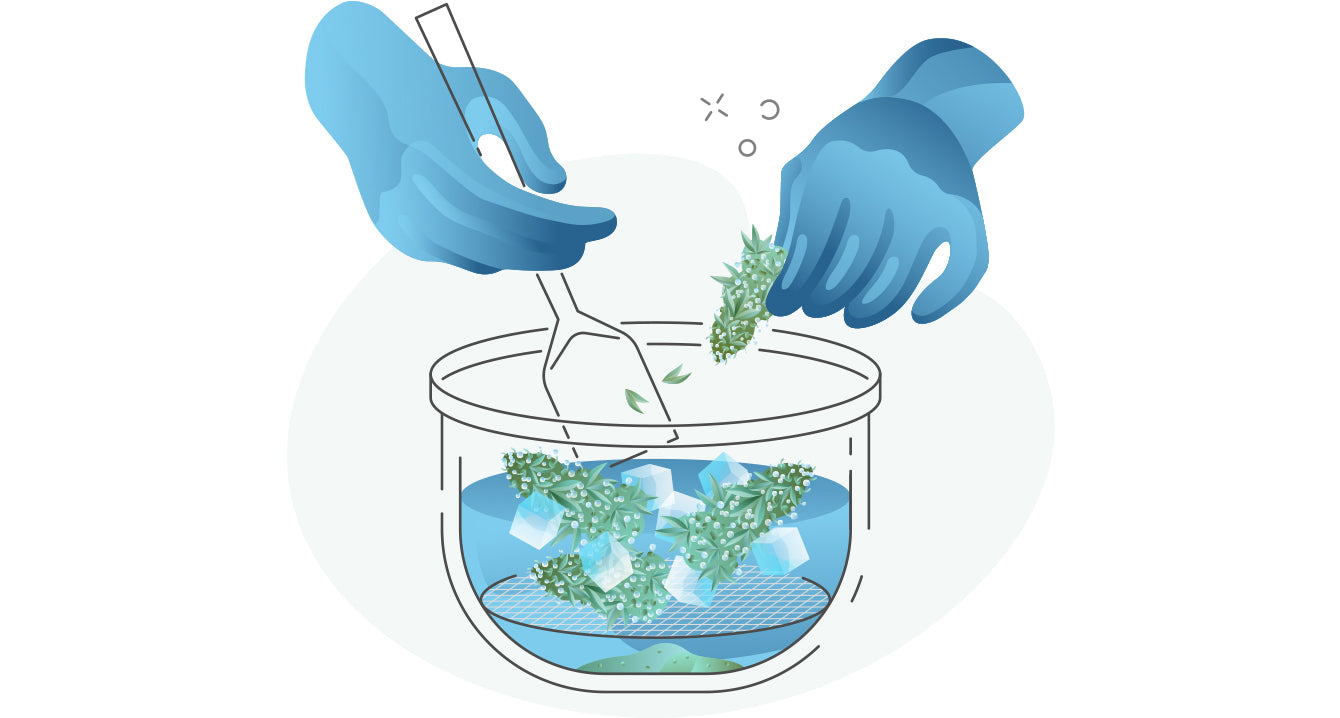How It’s Made
How Hash Is Made
Making hash combines old traditions with new techniques. We talked to Licensed Producers to get the inside scoop on their unique hash production methods.

Hash made its first appearance in the legal recreational cannabis market in 2020, but its history dates back thousands of years. Made from the sticky, crystal-like trichomes found on the cannabis plant, it’s one of many types of cannabis concentrates, rich in cannabinoids and terpenes.
How are those resinous trichomes transformed into hash? To find out, we turned to Licensed Producers, specifically Supreme, Sundial Growers and Neptune Wellness Solutions, to give us the inside scoop on their unique hash production methods.
Step 1: Selecting and Preparing the Flower

Before producers can start hash production, they have decisions to make about the cannabis flower they’ll use. Dried or fresh? Trim or whole plant? Single or multiple harvests?
Neptune turns to external growers to source whole plants from multiple harvests of unique strains for its Mood Ring Legacy Hashish. Supreme chooses trim from its in-house 7Acres dried flower to make its Hiway Hash. Sundial uses whole fresh plants from a single harvest (grown in-house), focusing on smaller buds and good trichome coverage for its Top Leaf Bubble Hash.
“We like to ensure our flower is properly hand-shucked to minimize damage and loss of trichomes, but we also keep many of the sugar leaves [the smaller leaves that grow from the flower],” says JC Elkhouri, director of post refinement at Sundial. “Trichomes from various parts of the plant contain different cannabinoid profiles and we want our bubble hash to be a true representation of the flower we grow.”
Depending on each Licensed Producer’s unique process, the flower may be frozen to maintain freshness and to preserve the trichomes (and the terpenes within). Sundial ensures its flower is frozen within 24 hours of harvest and that it spends at least 24 hours in a -40ºC freezer prior to processing for hash.
Step 2: Collecting the Concentrate
When the dried or fresh-frozen flower is ready, it’s time to separate the trichomes.
There are a few different types of hash; bubble hash and dry sift hash are two of the most popular. Both are made without the use of solvents and while the resulting product is similar, the processes are unique.

Dry sift hash is what it sounds like: The plant material is carefully brushed back and forth over a fine-mesh screen (or a series of ever smaller screens), letting the separated trichomes fall into a container beneath to be collected. To make its Hiway Hash, Supreme uses a variation of this simple dry sift process that involves a tumbling machine with screens sized specifically for trichome glands.
Bubble hash requires a more complex process, one that involves agitating the flower to separate the trichomes. The cannabis flower is typically placed in a mesh bag and soaked in ice water to rehydrate it and give it some “bounce,” says Elkhouri. “This is important because when we go to agitate the plant material, we only want to separate the trichomes from the flower, but not break the flower itself. Doing so would rupture cellular walls and release chlorophyll into our product.”

The careful agitation is done by machine or by hand, using paddles. The water is then left to settle; the trichomes fall to the bottom of the tank (the sieve-like lining of the mesh bag keeps the unwanted plant material from escaping) where they’re drawn through a series of smaller filters. “Because every strain can represent many phenotypes — that is, different trichome densities, sizes and trichome types — we tailor our agitation and filtration process from strain to strain so we can maximize extraction efficiency and quality,” says Elkhouri.
Fun Fact
To make its bubble hash, Sundial employs a large washing system that can hold 10 to 15 kg of cannabis at a time!
Both production methods can take anywhere from a few hours to more than a day to complete. The resulting product is a concentrated collection of the plant’s trichomes. It contains high levels of cannabinoids and terpenes, which give it a light to dark golden colour. If more plant material is present, the hue can lean toward green.
Dry sift and bubble hash methods are chosen for various reasons. “Water is a fantastic medium to extract trichomes,” says José Dominguez, cannabis sommelier and product manager with Neptune, of the company’s bubble hash process. “It also speeds up the process of refining the resin gland compared to dry sifting, and gives us the flexibility to extract fresh or cured material.”
“Preferences differ throughout the province and among demographics,” says Hunter Kamula, brand manager at Supreme. “Dry sift is a common way of extracting and making hash that our customers can easily relate to.”
The production methods create different variances in texture, too. The bubble hash process is thought to allow for a greater level of terpene preservation, making the resulting concentrate slightly more malleable than that produced by the dry sift method.
Step 3: Drying and Pressing

Depending on how it’s extracted, the concentrate may be dried before it’s turned into hash. At Sundial and Neptune, the concentrate is quickly freeze-dried to remove moisture, which helps to both prevent mould and preserve the flavourful terpenes. At Supreme, the dry sift they produce during extraction does not require any additional drying.
Transforming the concentrate into hash requires another step: heating and pressurizing. At Neptune, the concentrate is placed in a mold that’s transferred into a heated press, ensuring firmness and uniformity. It’s then divided into one-gram portions. The specific pressure and temperature applied varies depending on the Licensed Producer’s unique process, as well as the amount of moisture in the concentrate. At Sundial, it’s given a squeeze of two to three pounds per inch (PSI), at a range of 40ºC to 60ºC, for four to 10 minutes.
Did you know?
At Neptune, extraction often happens around the clock. The production team can churn out up to six kilograms of hash each day.
The solid brick or ball of hash can be broken apart for use in a pipe, a bong, a concentrate-specific vaporizer or a dried flower vaporizer with a concentrate attachment.
Step 4: Testing and Packaging It Up

As with all legal cannabis products, testing and quality assurance are crucial. It’s done at many stages, from flower to finished product.
Neptune ensures the cannabis it sources for its hash has a Certificate of Analysis (CoA), which includes details about potency, pesticides, contaminants and microbials. It’s tested once more before extraction.
The concentrate produced during extraction processes is often also assessed internally by Licensed Producers (to keep track of attributes like cannabinoid content and terpene profiles), as well as once it’s been pressed into hash. “Gustatory and sensory testing is another part of our continuous improvement,” says Kamula.
Hash is typically packaged in a double container, with exterior childproof packaging. Neptune’s packaging is recyclable, and the inner sleeve can be resealed for freshness. Sundial uses a glass insert to reduce the static electricity known to degrade trichomes. And Hiway Hash’s inner packaging helps protect it from breakage.
Every product receives federally required labelling, which adds the cannabis symbol, brand name, THC and CBD content, health warning message, lot number, ingredients, “packaged on” and expiry dates, and bar code — details to keep consumers well informed. After packaging, the final product receives one more inspection to ensure safety for consumers.
Hash has a long history — and a bright future, with innovative technologies being combined with old-school techniques to produce new and interesting takes. As cannabis cultivars are bred specifically for extraction, look for more strain-specific hash options, as well as other innovative offerings.







